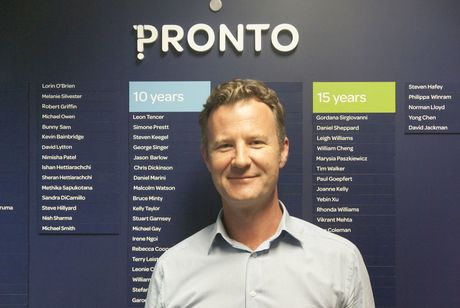Industry insights — Bruce Minty, Pronto Software
By Bruce Minty, Product Marketing Manager, Pronto Software
Tuesday, 08 March, 2016

Many processes have been streamlined in the field service industry in recent years — what further improvements are likely in 2016?
We’ll see more of a convergence between traditional field service mobile and customer collaboration tools. This will likely be value-add features such as social media integration, web conferencing and instant feedback mechanisms designed to better inform both customer and service provider, resulting in a ‘customer care’ model of service delivery. Given the prevalence of FS solutions in the market today, there will be more disruption and expectation on vendors to adapt quickly to market expectations, to constantly evolve their offering and drive innovation and interoperability with complementary tools.
What do you see as the greatest challenge for managers of mobile teams in the year ahead and why?
With users becoming more tech savvy and the prevalence of Gen Y, we’ll see more pressure on managers to have a clearer strategy on technology developments. They’ll need to know how new mobile tech can give them a strategic advantage over competitors and how they can leverage innovation to motivate and retain good staff in the longer term.
How has the field service industry evolved since the advent of mobile technology and what are the downsides of rapid change?
The FS industry has been forced to become more customer focused. KPI monitoring, service level agreements and a growing competitive landscape have provided customers with better performance data, negotiation power and more choice. Mobile has streamlined processes that we’re once hindered by paperwork. Concerns relating to efficiency and utilisation of workforce have driven change and disruptive tech has become the norm. Rapid change has to be managed and it needs to be in line with a company’s longer term strategy. They need to be confident that short-term pain will result in longer term gain and that all stakeholders have buy-in on the process and outcome. As a software vendor where rapid change occurs every day, I see no downside.
What trends are we likely to see emerge in the short term — what is the ‘next big thing’?
Predictive analytics will mean the end of the current ‘break and fix mentality’ and change how preventative maintenance is forecasted. IBM’s Watson Analytics is able to use trends in data to predict issues before they arise, so I see this driving innovation in service by making providers more proactive. Technology will have significant impact on how maintenance is scheduled and breakdowns are predicted.
An increasing number of vendors have been attracted to the field service segment in response to market growth. How will that landscape level out and what will it look like at the end of 2016?
New players to FS may well be agile enough to develop mobile solutions in HTML5 and leverage existing technology to fill functional gaps in their offering and this will satisfy the price-conscious customer with minimal complexity. However, these new players will struggle to compete on larger deals where supply chain, analytics and big data are priorities. Sophisticated ERP and BI can’t be developed quickly. The market demands a robust transaction engine to drive efficiencies across their organisation, so well-marketed new technology will create interest but customers always select solutions on the depth of capability and reputation of the vendor.
How big a role does customisation play in delivering the most suitable offering to your client and can off-the-shelf ever compete with a fully tailored solution?
A customised solution may suit in the short term, but can create difficulties when maintaining and upgrading solutions. For the most part we’ve always consulted with best practice in mind as the preferred approach to an implementation, but we also have the benefit of being able to craft a solution where gaps are identified. Ultimately, if a customer identifies a potential opportunity to introduce a customisation that gives them a competitive advantage, then we’ll scope this and deliver the bespoke solution. It’s all part of our methodology of listening and adapting.
All-electric haulage fleet under mining alliance
A strategic alliance between Newmont and Caterpillar will see the rapid deployment of an...
How to measure ROI of field service management software
Some ROIs are easier to calculate than others. It's important to consider both tangible and...
Preparing the grid for electric vehicles
A new $3.4 million trial will help support growing adoption of electric vehicles across Australia...




